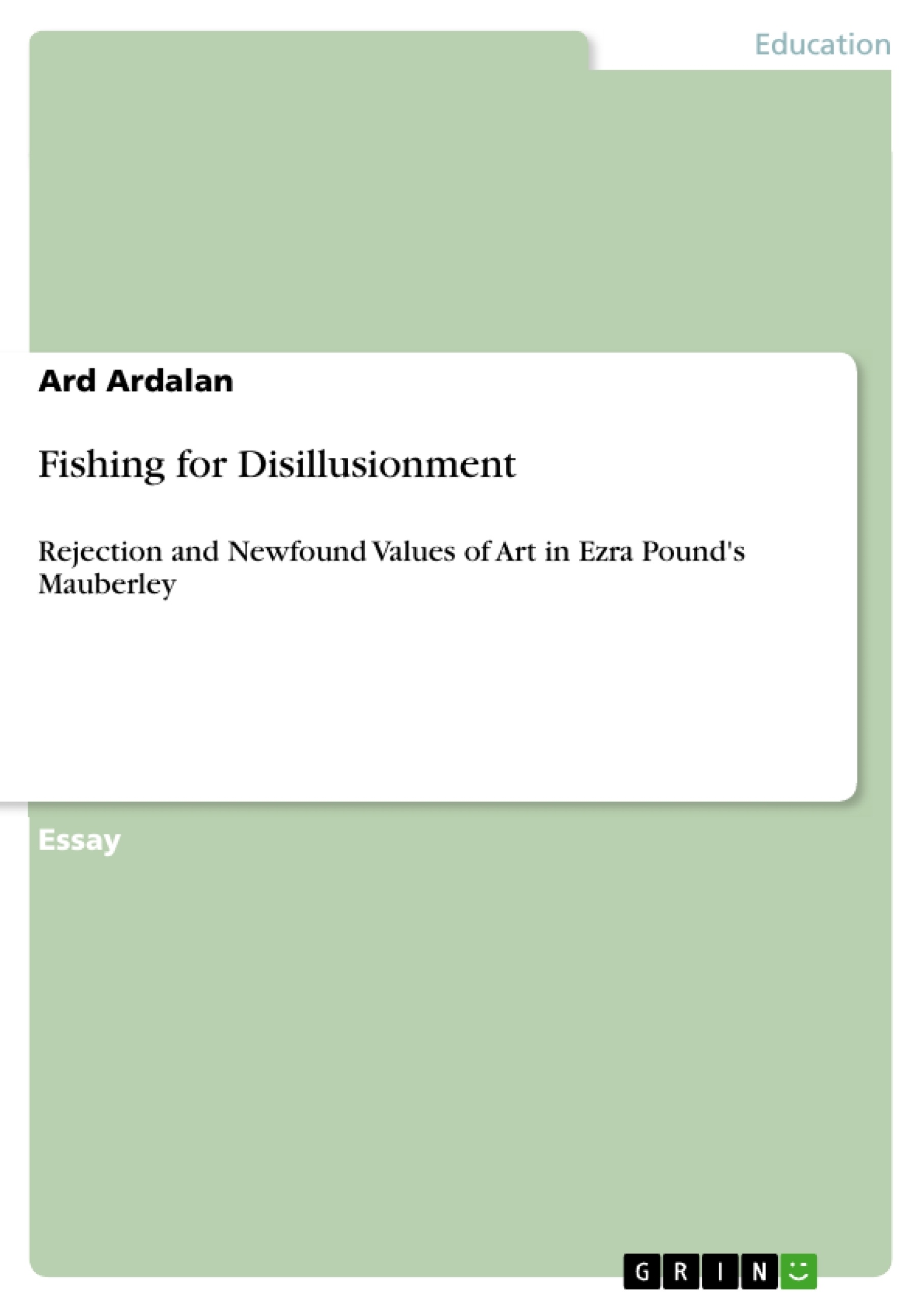It has been asserted that Ezra Pound's Hugh Selwyn Mauberley is the seminal work
which sees the poet through his greatest transformation.1 It was written and published in
1920 at a time when Pound was revising his views about the role of poetry and art. Though
it shows ambiguity about the role of the speakers in the poem, it is generally accepted that
E.P. and H. S. Mauberley are the two personae through which Pound speaks. These
characters both reject the vision of the pre-war aesthete for a temperament that results in the
transformation of Mr. Pound.
Ezra Pound recognizes that art is shaped through a societal pressure defined by the
demands of the day. He smartly dubs this pressure "the age" as if to hint at the fickle and
temporary nature of artistic tastes. The age seems to be demanding "an image of its
accelerated grimace". For Pound, that roughly translates to the kind of culture that gives rise
to Futurism: a blinded lauding of machines, noises, explosions in harmony with the buzzing
of sprawling urban centers and the battery of howitzer guns. [...]
Inhaltsverzeichnis (Table of Contents)
- Introduction
- Pound's Rejection of Pre-War Aesthetics
- Disillusionment and Disgust
- The Prose Kinema and Cryptic Verse
- Socio-Political Commentary
- Conclusion (Summary of the text without the conclusion)
Zielsetzung und Themenschwerpunkte (Objectives and Key Themes)
This essay analyzes Ezra Pound's Hugh Selwyn Mauberley, exploring its central themes and Pound's artistic transformation. It examines Pound's rejection of pre-war aesthetic values and his response to the socio-political climate of the post-World War I era.
- Pound's disillusionment with pre-war artistic ideals and the demands of the "age."
- The rejection of Victorian values and the inadequacies of Modernism's response.
- The connection between socio-political events and artistic inspiration.
- Pound's experimentation with poetic form and style as a reaction to societal pressures.
- The poem's function as a self-reflective work, rejecting the demands of the marketplace.
Zusammenfassung der Kapitel (Chapter Summaries)
Introduction: Introduces Hugh Selwyn Mauberley as a pivotal work marking Pound's artistic transformation. It establishes the dual personae of E.P. and H.S. Mauberley through which Pound expresses his views.
Pound's Rejection of Pre-War Aesthetics: Explores Pound's critique of pre-war aesthetic values and his rejection of the artistic demands of his time, specifically highlighting his criticism of Futurism and its glorification of modern warfare.
Disillusionment and Disgust: Focuses on Pound's disillusionment with his earlier attempts at "resuscitating the dead art of poetry," and his disgust with the prevailing artistic trends that prioritize superficiality and mass appeal.
The Prose Kinema and Cryptic Verse: Discusses Pound's deliberate use of romantic and mythical themes, obscure allusions, and cryptic verse as a reaction against the democratization of art and its perceived devaluation.
Socio-Political Commentary: Analyzes Pound's broader socio-political commentary, linking the degradation of artistic values to a moral and societal decay resulting from World War I.
Conclusion (Summary of the text without the conclusion): Summarizes the analysis without revealing any major conclusions or spoilers from the original conclusion. This section provides a concise overview of the main arguments and themes explored in the essay.
Schlüsselwörter (Keywords)
Ezra Pound, Hugh Selwyn Mauberley, Modernism, Victorianism, disillusionment, aesthetic values, socio-political commentary, World War I, poetic form, cryptic verse, artistic transformation.
- Quote paper
- Ard Ardalan (Author), 2009, Fishing for Disillusionment, Munich, GRIN Verlag, https://www.grin.com/document/122297



